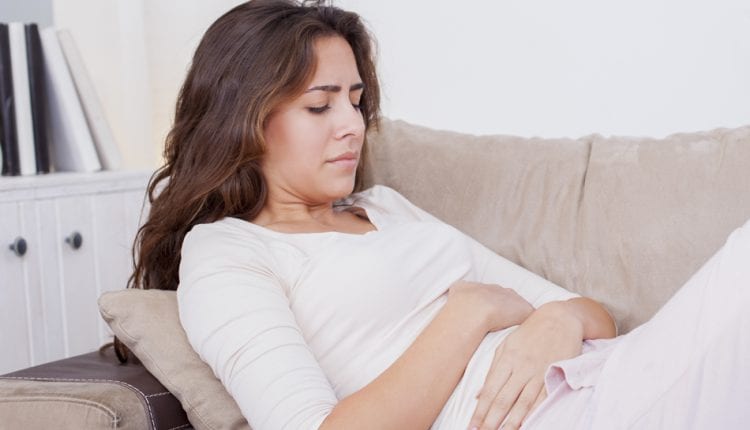
Crohn’s disease is one of the two main inflammatory bowel diseases (IBD), with the other being ulcerative colitis. It is a long-term condition that is caused by an inflammation in the gut and digestive system. The most commonly affected areas are the colon and the ileum (the lower portion of the small intestine). Unexpected parts of the digestive system—such as the mouth—can also be affected.
Crohn’s is a chronic disease, meaning that once diagnosed it is a lifelong affliction. While this sounds disheartening, patients often do experience long periods of remission during which their symptoms subside or disappear altogether. Many sufferers will find that they are subject to a cycle of ‘flare-ups’—or relapses—and phases of remission. This can make the condition unpredictable and harder to treat at times. Crohn’s disease usually first appears between the ages of 16 and 30, though it can plague people of any age. According to the NHS, there are approximately 115,000 cases of Crohn’s disease in the UK, but this figure is slowly rising.
Symptoms
It is important to identify the medical indications of Crohn’s disease early in order to seek adequate treatment. These indicators can range from mild to severe and can include:
- Diarrhoea
- Abdominal pain
- Fatigue
- Unintended weight loss
- Blood and mucus appearing in stool
- Fever
- Anaemia (reduced levels of red blood cells)
Causes
Despite detailed research on the condition, there is no widely accepted answer as to how and why Crohn’s disease occurs in some people and not others. That being said, researchers have identified 200 different gene pools that are common in those with the complaint—this suggests that it may be inherited through DNA. According to the NHS, if a patient is an identical twin with Crohn’s disease, their counterpart will have a 70 percent chance of having the condition as well.
There are various hypotheses as to why certain individuals are developing Crohn’s disease; one of them focuses on environmental factors. As the health complaint has been found to be far more prevalent in western countries such as the UK—and less so in others like Africa—it can be assumed that there is a link between modern western lifestyles and the contraction of Crohn’s. While specific diets may not be the cause of the condition, changes can be made to alleviate discomfort and keep it under control. Likewise, a weak immune system is also said to play a role in the development of Crohn’s disease.
Past illness is another high-risk factor that can lead to Crohn’s. In susceptible individuals, a previous childhood infection may have weakened the body’s immune system, therefore leading to Crohn’s disease in later life. One of the most prevalent risk factors is smoking; smokers are twice as likely to develop the disease compared to non-smokers. Additionally, those with the condition say that smoking exacerbates their symptoms greatly, causing increased discomfort.
Treatments
Once your doctor has diagnosed your condition, it is important to work together to find a treatment that is appropriate for you. There is no ‘cure’ for Crohn’s disease, however, there are various ways of managing it so you can go about your daily life unhindered.
Steroid medication
The first course of action offered to patients is steroidal medication or corticosteroids. These are designed to reduce inflammation and keep symptoms of the disease at bay. Steroid medication either comes in tablet form or as a course of injections. While they can be successful they can also come with unwanted side effects such as increased vulnerability to infections, weight gain, swelling of the face and weakening of the bones.
Immunosuppressants
If symptoms reappear or flare up more than twice during a year, alternative methods may be necessary to tackle the condition. In this case, medication that suppresses the immune system may be mixed with prescription medicine—azathioprine and mercaptopurine are the most commonly used types. This route also comes with possible side effects that may need to be monitored such as nausea, vomiting, liver problems, anaemia and pancreatitis.
Biological therapies
If a patient suffers from very severe symptoms or is in generally poor health, there are other possibilities for treatment. Biological therapy is one such prospect, and it involves suppressing the immune system with naturally occurring biological substances such as enzymes or antibodies. This can be administered via a drip or injections delivered in hospital or at home. Some patients have reported allergic reactions during this therapy; therefore any suspicious signals of this should be reported immediately.
Surgery
Your healthcare team will analyse your unique situation. If they believe the benefits of surgery outweigh the risks then they will put you forward for it. This is usually a last resort decision made if all other therapies have failed. The two main surgical procedures are resection and ileostomy. A resection involves the removal of the inflamed portion of the intestine and re-joining the healthy sections. An ileostomy is similar, but this procedure—on the other hand—diverts digestive waste away from the inflamed area, giving it a chance to heal properly. The end of the small intestine is re-routed to a hole made in the abdomen rather than being re-attached. Waste products are then diverted into what is known as a stoma bag, which is attached to the opening of the abdomen. The stoma bag will need to be emptied regularly, which may mean altering your daily routine. Some patients suffer from skin irritation around the entrance of the stoma bag; ensure to keep the area thoroughly clean and free from external dirt and oils. Your doctor should be able to advise you on the best ways of adapting to life with a stoma bag whilst caring for it properly. After the surgeon is happy that the colon has sufficiently recovered, a second operation will reconnect the intestine to the colon and remove the need for the stoma bag.





























